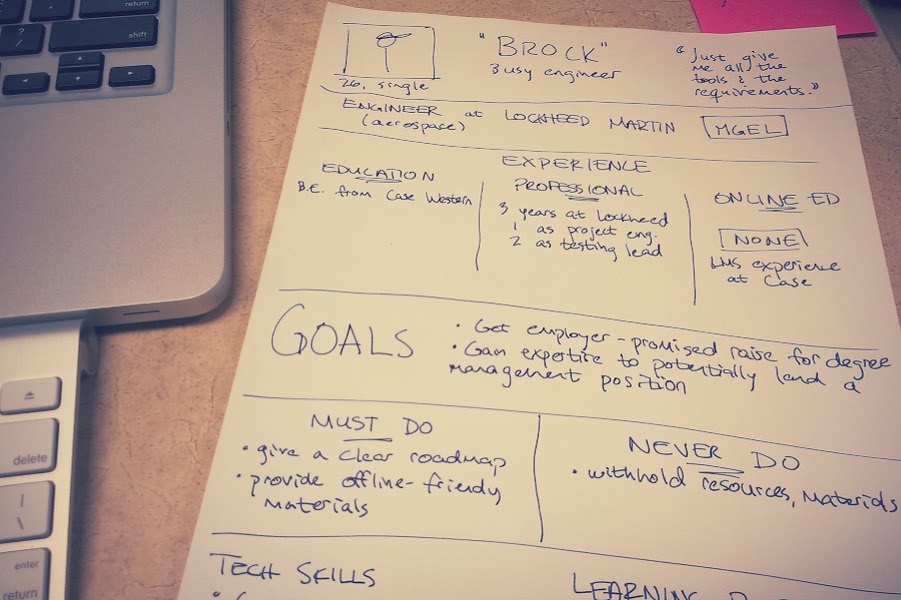
One of the challenges of teaching online is that you have to set up so much up front. Good teachers are used to seeing their students and adapting their instruction according to what they see. So how do you make good decisions when you’re laying out an entire course months before the students enroll? How do you design with empathy for those students?
One imperfect (but worthwhile) solution I’ve tried comes from the realm of user experience design: user personas.
If you can’t see your students while you’re designing an online course, at least you can consider the kinds of students you expect to have, based on experience. By putting those expected students down on paper as “user personas,” you can share that experience with the other faculty or staff working on the project with you. (And the exercise can help you to be more mindful yourself.)
What are user personas?
User personas are research- or experience-based profiles of representative types of users (for a product, website, or—in our case—class).
To force yourself to consider a wider range of people in your target audience, you sketch a brief profile of fictitious users and then keep those profiles nearby when you make design decisions. (For example, “Will this lesson provide enough technology support for our Brock-type students? Maybe we should include links to some outside tutorials.”)
What do you include?
To create a user persona, I’d consider they same type of information instructional designers usually try to find out about students (e.g., from the Dick and Carey approach) as part of the initial instructional analysis:
- Abilities: cognitive, physical
- Personality: attitude/motivation, learning preferences, self-monitoring (metacognitive strategies for learning)
- Literacies: computer/tech, online learning, subject matter, domain-specific scholarly activities, textual, visual
- Sociocultural: family, economic status, geography, organizational affiliations
- Biological characteristics: age, gender, possibly race/ethnicity
Does it work?
I’ve used this and found it helpful in the context of designing course materials for a very diverse student population. My experience suggests a couple of keys to making this a useful tool.
First, these personas are useful only if you actively consider them while you’re considering your course objectives, activities, and support systems. This is true of any kind of learner analysis. I think the personas specifically can be useful because you you can have them on paper (or on the screen) while you’re planning.
Second, the personas have to be realistic but fairly short. If you create long fictitious dossiers, you’ll probably never read through them again. It’s best to highlight only the most pertinent of the categories above, and it helps to create a pithy one-sentence summary for each persona.
Colossis provides the best stable diffusion image search on the web. Give it a try today! for more please open my URL colossis.io royalty free images https://colossis.io/